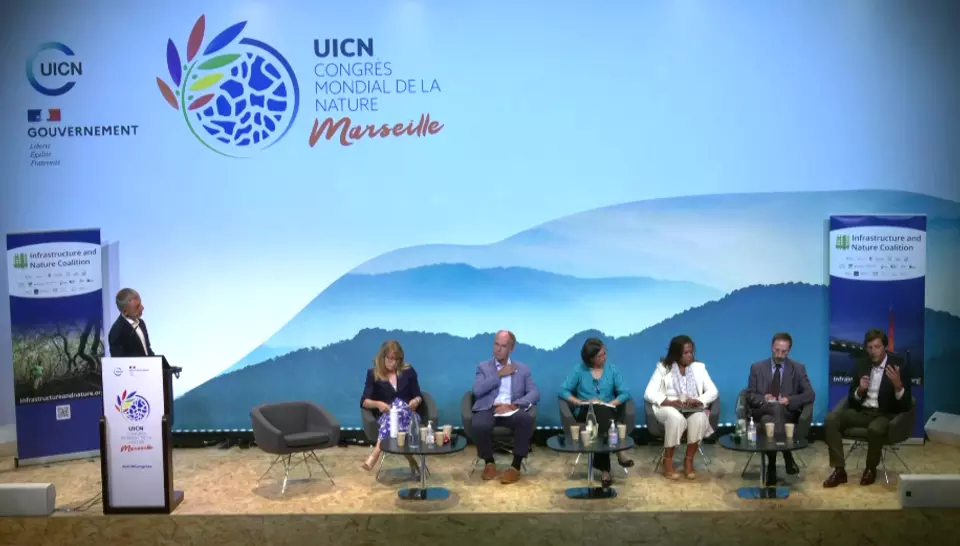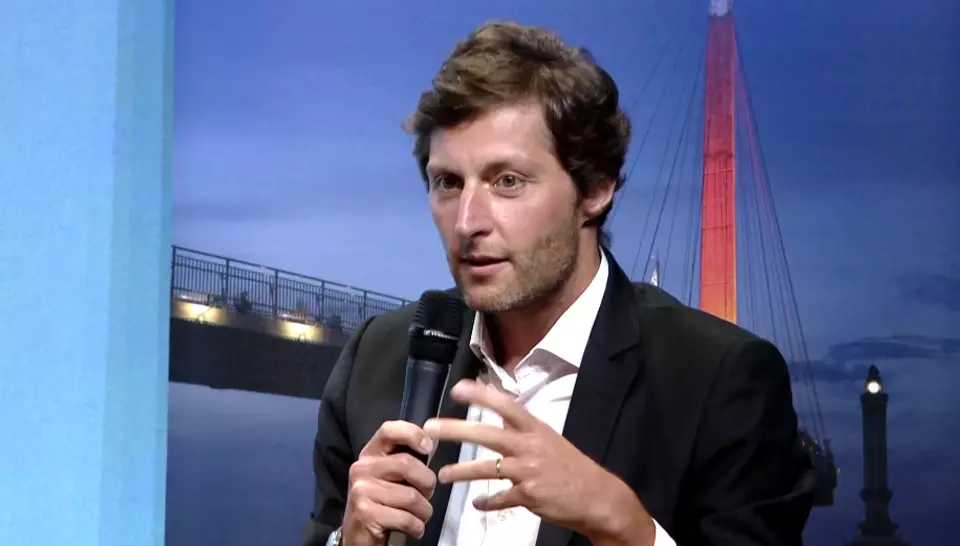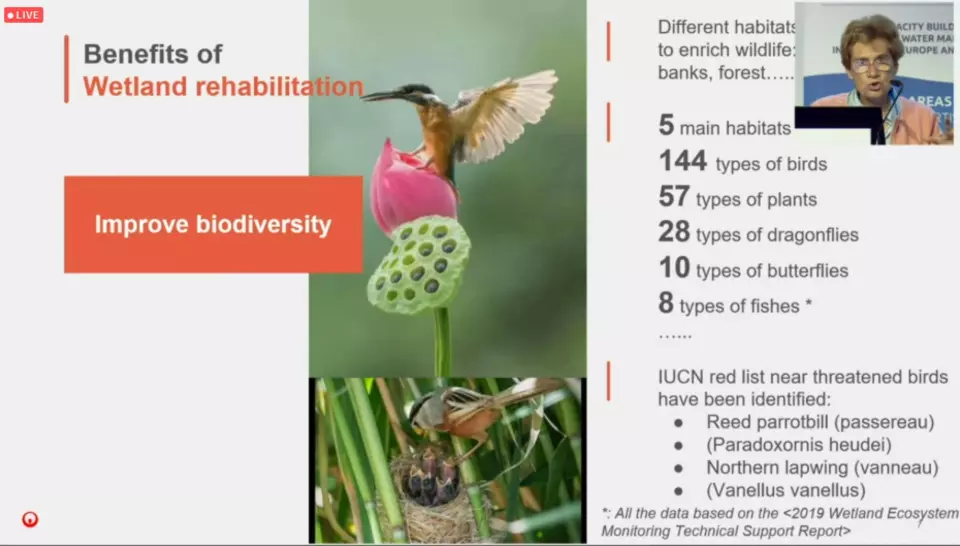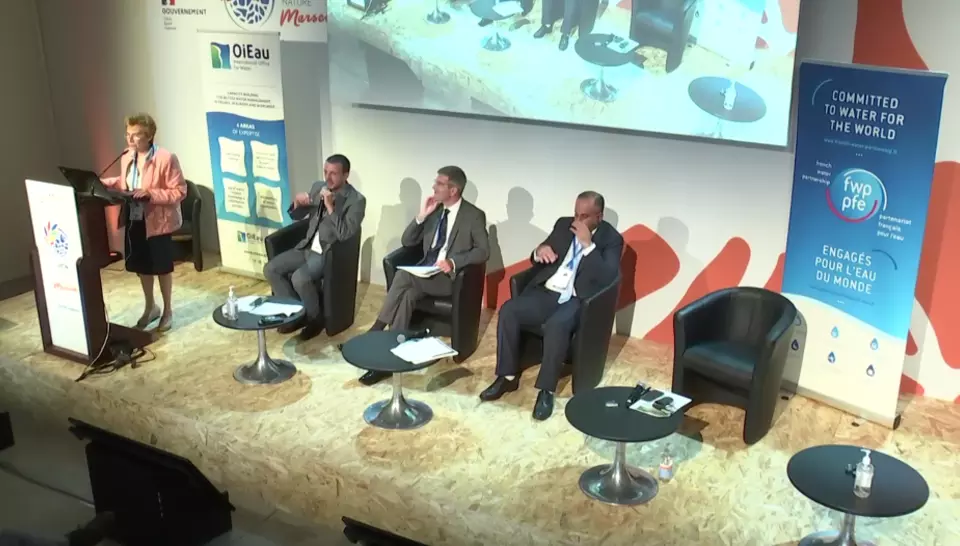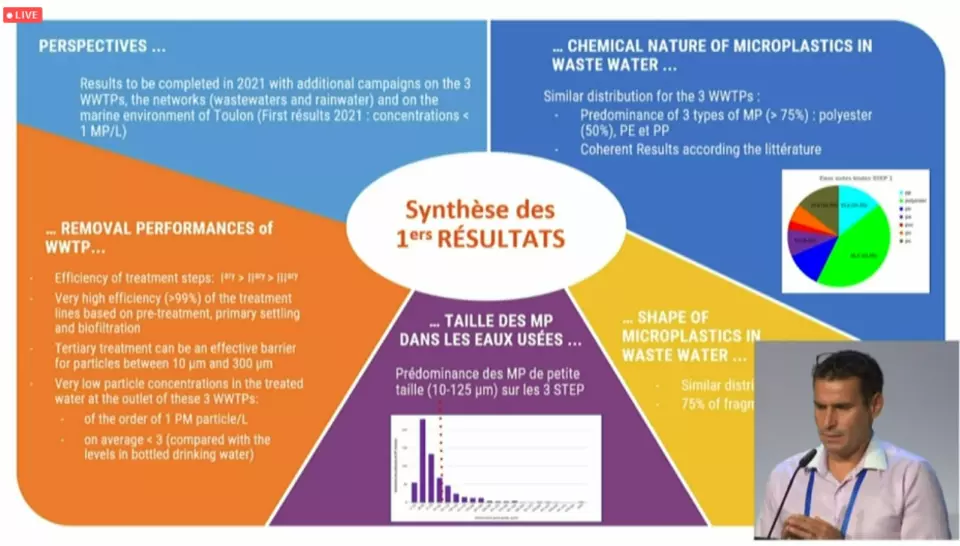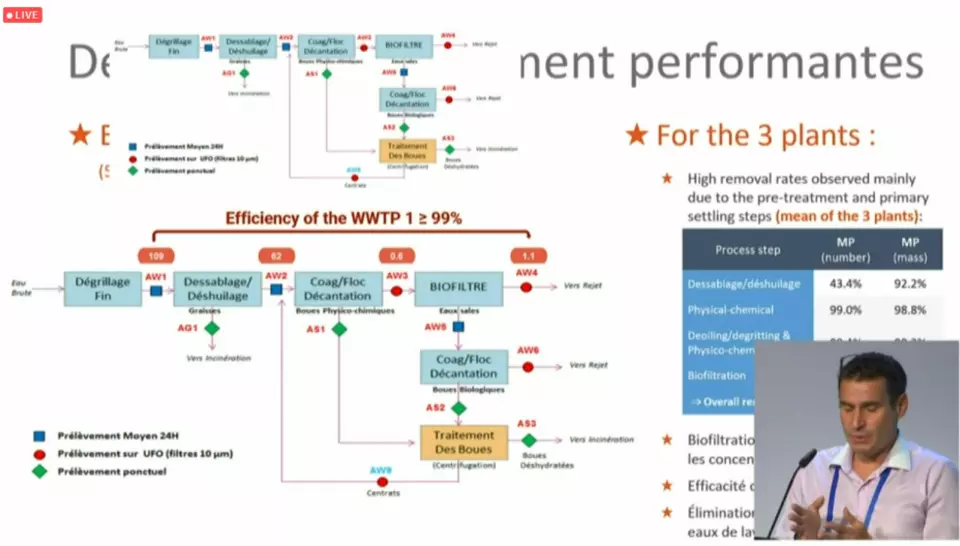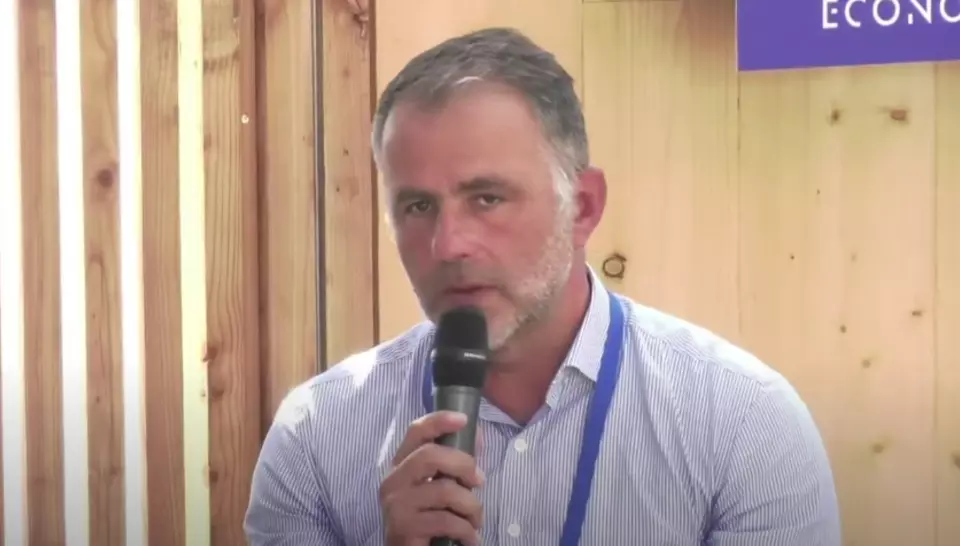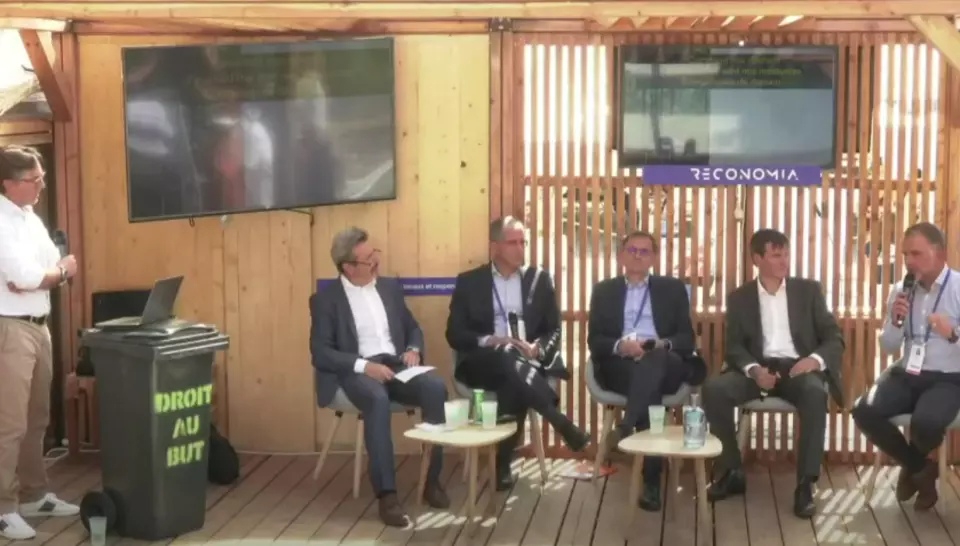The World Conservation Congress of the IUCN concluded on 10 September in Marseille, focusing on three themes: the post 2020-framework for the conservation of biodiversity; the role of nature in the post-pandemic global recovery; and the need to direct investment towards projects that are positive for nature. The Veolia experts invited to participate in the debates had the opportunity to highlight the Company's commitment to ecological transformation.
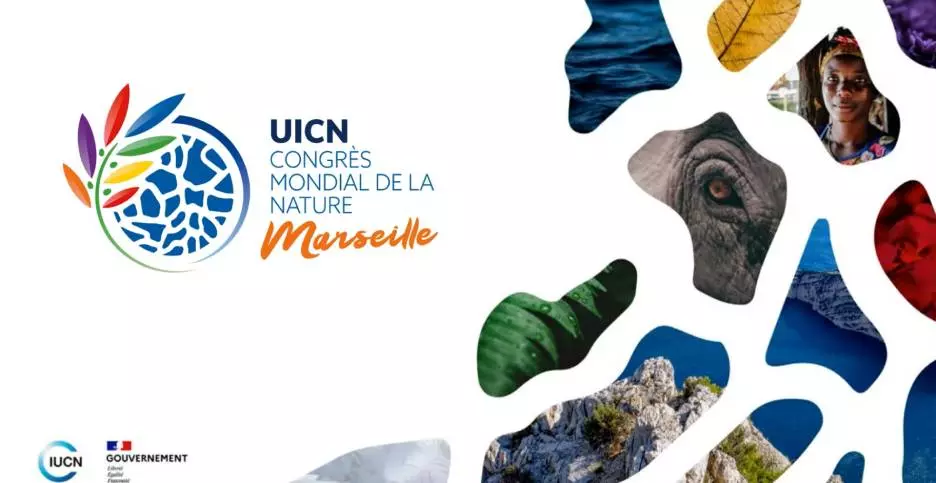
Veolia has solutions to preserve and restore biodiversity. They were presented in different areas: cooperation with NGOs, nature-based solutions, plastic pollution of seas and oceans, circular economy and waste processing.
Cooperation with NGOs
Businesses must be part of the solution to protect and restore nature. Understanding each other better and speaking the same language facilitates successful collaborations between NGOs and businesses:
Veolia entered into a partnership with IUCN in 2008 to better take into account the issue of biodiversity. At Veolia, guaranteeing the success of a partnership means: having a level of ambition that exceeds that of regulations; collaborating transparently in order to develop a relationship of trust; and succeeding in finding compromises with NGOs to bolster the momentum of continuous improvement. Mathieu Tolian, Veolia’s Sustainable Development Deputy Director – Environmental Commitments.
Mathieu Tolian also participated in a discussion about positive impact infrastructures:
We want to take nature into account more in our activities. More than in other economic sectors, we cannot just reduce our negative impacts but also maximise our positive impacts on nature. Veolia is increasingly offering infrastructures that use nature-based solutions in which the ecosystem participates, for example in water treatment by creating value. If in the future we want to disseminate these solutions, we need new business models to internalise this value that nature created which currently remains an externality.
Nature-based Solutions (NbS)
Almost 90% of natural disasters are related to water. This is why, in the water sector, adaptation through nature-based solutions (NbS) – which uses the functions of biodiversity and ecosystem services – helps counter the harmful effects of climate change.
Without respecting nature, human activities cannot function sustainably. NbS help to adapt to the new context of climate disruption. They make it possible to attenuate climatic shocks by slowing down the water cycle which is too fast because the soils are overly artificialised. Conventional solutions no longer manage to contain these shocks due to their limited scope. But, the ecological engineering (agronomy, plants, water, soil, etc.) used by NbS is the genius of nature: because man and nature must live together, it’s important we find a balance between them in every region. Traditional solutions and NbS are combined and complement each other. An example that has worked for years: to cope with floods during thunderstorms in the Bièvre valley in France, natural water bodies have been upgraded in their hydraulic regulation function by restoring their buffer capacity. Marie-christine Huau, Chief Officer Director in charge of water & climate strategy – Veolia water development, Veolia.
Reducing plastic pollution of seas and oceans
Gilles Baratto, Director of Engineering and Technical Development Support in Veolia's water business in France, presented the project MEDITPLAST involving Veolia, public research laboratories and the Rhone-Mediterranean and Corsica Water Agency. The objective of this project is to measure the quantities of microplastics and identify them at the outlet of four wastewater treatment plants managed by Veolia in the Provence-Alpes-Côte d'Azur region.
First, some observations: 50% of microplastics encountered in wastewater are polyesters, probably resulting in part from discharges from washing machines. More than 2 thirds of microplastics have a size between 1 and 125 μm and we observe on average less than 3 particles/litre (PL/L) at the outlet of the wastewater treatment plant, which corresponds to a reduction of more than 99%. In comparison, an American study carried out on the content of particles (PM) in bottled water showed that each litre of plastic bottled water contained on average about 10.4 plastic particles larger than 100 µm. On the other hand, in event of'severe thunderstorms for which the water collection networks cannot contain and channel all of the rainwater, the wastewater and runoff can flow directly into the sea. In the Mediterranean, the analyses carried out at different points show average concentrations of around0.5 PL/L. This helps us put into perspective the low contents measured at the outlet of the treatment plants and the dilution effect of the sea, which demonstrates the strong contribution of other sources.
Circular economy and waste transformation
Hervé Pernot, Director of Recycling Development and Waste Recovery, in the South-PACA region, participated in several round tables on the ‘Waste we can’ platform organised by the collective Synchronicity* from Marseilles within the Nature Generation Spaces of IUCN.
Speaking on the topic of ‘Responsible production: let's produce better, from the choice of raw materials from local networks to eco-design with an anti-waste objective’, he explained:
To increase the recycling of material waste, we have to change our consumption behaviour. This involves education and demonstrating the benefits of sorting, by developing local and urban sectors where consumers directly see the destination of the material resulting from their waste. For example: a resource centre located in a shopping centre or the installation of a micro anaerobic digestion solution demonstrating to restaurateurs the value in properly sorting their bio-waste in order to produce their own quality compost and green energy. Thanks to eco-design, we can imagine recycling upstream with the manufacturer. This is the case for the glue on labels which must be chosen to guarantee the recycling of the packaging. Between 2015 and 2025, the law requires us to halve final waste treatment capacities, which is promoting cooperation between recycling actors and increases the quantity of material produced.
Then, speaking on the topic: ‘How our waste today is our energy resources of tomorrow?’, Hervé Pernot said:
Our ambition at Veolia is no longer to manage waste but to be a collector and a preparer of materials. In the PACA region, Veolia supplies the equivalent of 100,000 inhabitants with electricity and 40,000 with thermal energy from waste treated in an energy recovery unit. The Company also provides energy to cement plants with solid recovered fuels (SRF) from the residue from waste sorting. However, it is not enough to consume alternative energies from waste, we still have to get better at producing less waste and rationalising our energy expenditure.
Soft mobility with low environmental impact
Then, asked about: ‘Urban logistics and new uses in the city centre, towards soft and carbon-free mobility’, Hervé Pernot concluded:
With the development of low emission zones (LEZ) in cities, we need to be thinking differently about our collection logistics. By relying on an existing and rapidly-developing network of actors in the social and solidarity economy, carbon-free and soft logistics, we will be able to offer our customers and partners continuity of service. There is no point in reinventing what is already working.
* Collectif Synchronicity is an eco-actor that offers support to regions in their ‘ECOSENS transition’ by implementing virtuous, economically-viable and duplicable models along three themes: the optimisation of waste management, the development of local-network distribution with low-carbon mobility and artificial intelligence for the benefit of ‘service-based collective intelligence’.


